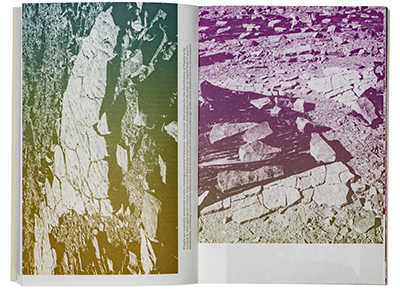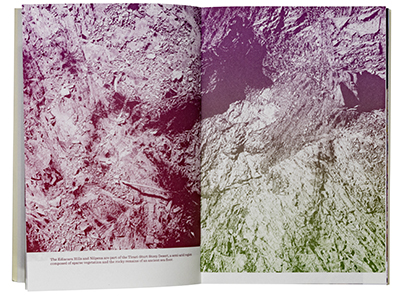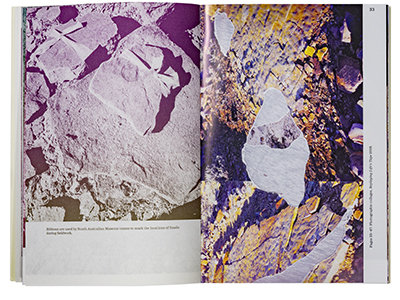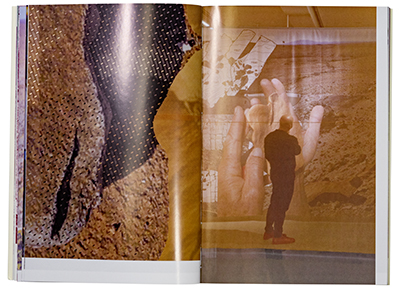| Title | Replaying Life's Tape |
| Artist | Mariana Castillo Deball |
| Designer | žiga Testen + Stuart Geddes |
| Colour grading | Colour & Books |
| Separations | Colour & Books |
| Press checks | Colour & Books |
| Production | Fine books: Jos Morree |
| Publisher | Monash University Museum of Art |
| Printer | Wilco Art Books |
| Binder | Patist |
| Paper | Munken Print White + Sappi Quatro Gloss |
| Binding | Pata bind |
| Reproduction | CMYK + fountain print (LED-UV+ conventional) |
| ISBN | 978-3-96436-017-5 |
| Year | 2019 |
The Book
Replaying Life’s Tape by Mariana Castillo Deball is a publication on the occasion of her show at Monash University Museum of Art (MUMA). The book explores a cycle of recent projects by Castillo Deball that take fossils, evolution and phylogenetic trees as their subject matter.
Castillo Deball’s work is informed by collaborations with institutions, museums and researchers working outside the field of contemporary art. Thus, her projects have been evolving in the field of museology, ethnography, archaeology and palaeontology.
Replaying Life’s Tape is the result of a research trip that she made to a significant fossil site at Nilpena, in the Ediacara Hills. South Australia, in 2018.
The use of colour in the text sections respond to emerging hypotheses about pigmentation during the Ediacaran Period.
The Process
A large part of this book is printed in the so called Fountain print technique. With fountain print the printer partitions the ink reservoir of one printing unit of the press. Then each section is filled with a different ink colour. While printing, a gradient of all of these colours is formed on the paper. During printing this gradient will evolve, creating unique prints for each individual sheets. A result one can only obtain on a proper printing press.
The images came to me quite bland. The artist does not work in the field of photography so much. Her work comes alive in installations. For the book it is more important that the individual images have a clear expression. They either represent objects that are part of the artist’s work, or they represent an impression of the installation. As a reader one should be able to identify with the space and the lighting in which the work was presented.







